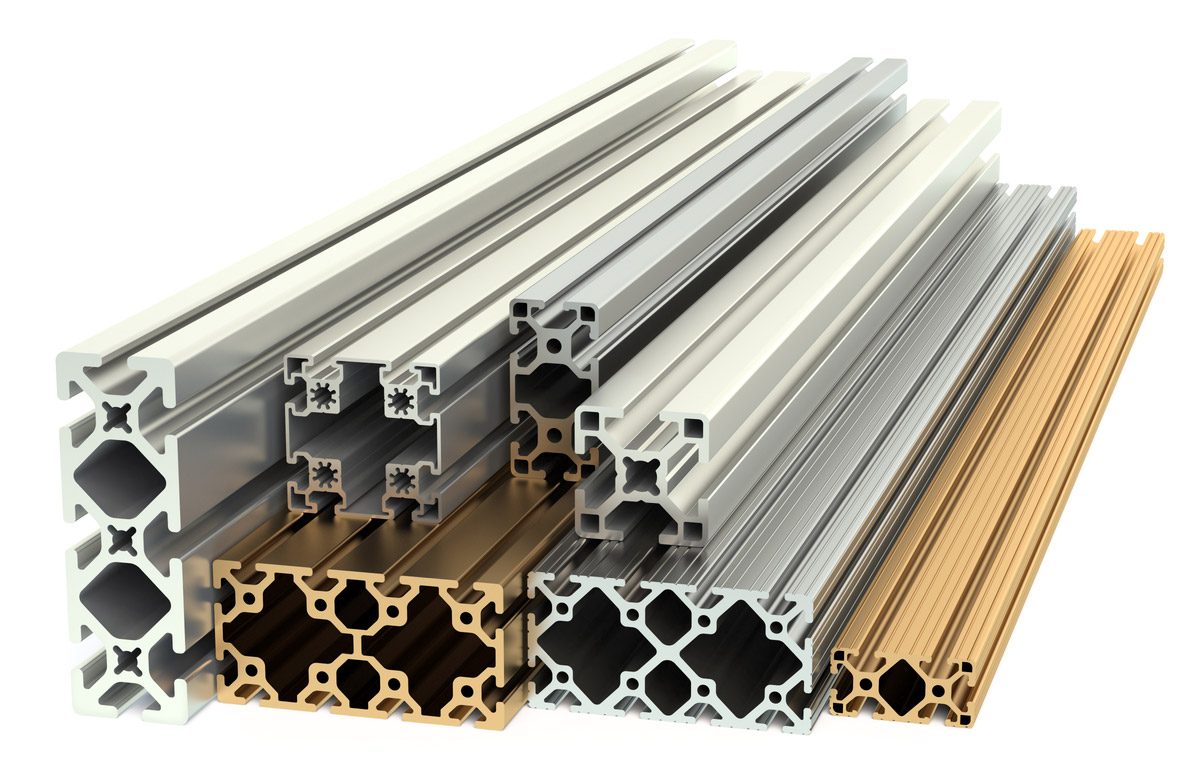
Introduction
Aluminum extrusion is a fundamental process in modern manufacturing, enabling the creation of complex cross-sectional profiles with remarkable precision and efficiency. This technique involves forcing aluminum alloy material through a die to produce a desired shape, which can then be utilized in various industrial applications. As industries continually seek lightweight yet durable materials, Aluminum Extrusion stands out as a pivotal technology that meets these demands. Understanding the intricacies of aluminum extrusion not only sheds light on its widespread use but also highlights its importance in advancing technological innovation.
Historical Development of Aluminum Extrusion
The history of aluminum extrusion dates back to the early 20th century when the process was first developed to meet the needs of emerging industries. Initially, it was used primarily for creating simple shapes for construction and transportation. However, with the advent of new technologies and the increased availability of aluminum, the extrusion process evolved significantly. The development of advanced extrusion presses and dies allowed for more complex profiles, broadening the application scope of Aluminum Extrusion. This evolution has been instrumental in meeting the growing demands of sectors such as aerospace, automotive, and electronics.
The Aluminum Extrusion Process
At its core, the aluminum extrusion process involves heating a billet of aluminum alloy and then forcing it under high pressure through a die shaped in the form of the desired cross-section. The process can be broken down into several key stages, each crucial for achieving the optimal structural and mechanical properties of the final product.
Selection of Aluminum Alloys
Choosing the appropriate aluminum alloy is paramount in the extrusion process. Alloys from the 6xxx series, such as 6061 and 6063, are commonly used due to their excellent extrudability and favorable mechanical properties. These alloys offer a good balance between strength, formability, and corrosion resistance, making them ideal for a wide range of applications. The specific alloy selected can significantly influence the ease of extrusion and the characteristics of the final extruded profile.
Billet Preparation and Heating
Before extrusion, the aluminum billet must be properly prepared and heated to a specific temperature, typically between 750°F and 925°F (400°C to 500°C). This heating is essential to soften the aluminum sufficient for extrusion while maintaining its metallurgical integrity. Precise temperature control is critical, as overheating can lead to defects, and underheating can cause excessive pressure on the extrusion press.
Extrusion and Quenching
Once heated, the billet is placed into the extrusion press container, and a ram applies pressure, pushing the aluminum through the die opening. The extruded aluminum emerges in the shape defined by the die and is immediately subject to quenching processes to cool it rapidly. Quenching can be performed using air or water, depending on the desired material properties and the specific alloy used.
Stretching and Finishing
Post-extrusion, the aluminum profiles are stretched to straighten and relieve any internal stresses. This process ensures the final products meet strict dimensional tolerances and have the necessary mechanical properties. Further finishing processes, such as cutting, machining, or surface treatments like anodizing, may be applied to enhance the profiles' performance and appearance.
Advantages of Aluminum Extrusion
Aluminum extrusion offers numerous advantages that make it a preferred method in various industries. One of the primary benefits is the ability to create complex cross-sectional shapes that would be difficult or impossible with other manufacturing processes. This flexibility allows for the design of components that are both lightweight and structurally strong.
Design Flexibility and Customization
The extrusion process allows designers to incorporate a variety of features into a single profile, reducing the need for additional fabrication and assembly. This capability leads to cost savings and efficiency improvements. Customization is nearly limitless, enabling tailored solutions for specific applications. Companies like YURUN Aluminum Co., LTD specialize in providing Aluminum Extrusion services that meet unique customer specifications.
Strength-to-Weight Ratio
Aluminum is known for its excellent strength-to-weight ratio. Extruded aluminum profiles maintain this characteristic, making them ideal for applications where weight reduction is crucial without compromising structural integrity. This advantage is particularly significant in the aerospace and automotive industries, where every kilogram saved can enhance performance and fuel efficiency.
Corrosion Resistance and Durability
Aluminum naturally forms a protective oxide layer that enhances its corrosion resistance, a property that can be further improved with surface treatments. This characteristic makes extruded aluminum profiles suitable for harsh environments and applications requiring long-term durability. Additionally, aluminum is non-toxic and recyclable, contributing to environmental sustainability efforts.
Applications of Aluminum Extrusion
The versatility of aluminum extrusion has led to its adoption across a diverse range of industries. Its ability to be tailored for specific needs makes it invaluable in sectors that demand high precision and performance.
Construction and Architecture
In construction, extruded aluminum profiles are used for window frames, curtain walls, roofing systems, and structural components. Their lightweight nature simplifies installation and reduces structural load, while their durability ensures longevity. The aesthetic flexibility of aluminum also allows architects to achieve innovative designs and finishes.
Automotive Industry
The automotive sector utilizes aluminum extrusion to manufacture components such as engine blocks, transmission housings, and chassis structures. The reduced weight of aluminum parts contributes significantly to improved fuel efficiency and reduced emissions. Moreover, the ability to absorb impact energy makes extruded aluminum profiles ideal for safety-critical components.
Aerospace Industry
Aluminum extrusion is integral in aerospace applications due to its high strength-to-weight ratio and reliability. Components such as fuselage frames, wing structures, and interior fixtures benefit from the precision and consistency offered by the extrusion process. The material's corrosion resistance also ensures performance in challenging atmospheric conditions.
Electronics and Consumer Goods
In electronics, extruded aluminum serves as heat sinks and enclosures, leveraging its excellent thermal conductivity. Consumer goods manufacturers use aluminum extrusion for products ranging from furniture to sports equipment, capitalizing on its aesthetic appeal and functional properties.
Recent Innovations in Aluminum Extrusion
Advancements in technology have expanded the capabilities of aluminum extrusion, introducing new possibilities and applications. Innovations focus on improving efficiency, precision, and environmental sustainability.
Advanced Extrusion Techniques
Developments such as micro-extrusion allow for the creation of extremely small and intricate profiles, essential for medical devices and micro-electromechanical systems. Additionally, improvements in die design and simulation software enhance the precision and reduce lead times for new profile development.
Sustainability and Recycling
The aluminum industry is at the forefront of recycling efforts, with extrusion processes increasingly utilizing recycled material without compromising quality. Energy-efficient production methods and reduced material waste contribute to the environmental benefits of using Aluminum Extrusion in manufacturing.
Challenges and Considerations
While aluminum extrusion offers many advantages, there are challenges that manufacturers and designers must consider. These include the initial cost of die creation, limitations on the size of extrudable profiles, and the need for precise process control to avoid defects.
Die Design and Costs
Designing and manufacturing extrusion dies requires specialized knowledge and can represent a significant upfront investment. However, the costs are often offset by the efficiencies gained in mass production. Collaborating with experienced extrusion companies can optimize die design for cost-effectiveness and performance.
Process Control and Quality Assurance
Maintaining tight control over extrusion parameters is essential to ensure the quality of the final product. Variables such as temperature, extrusion speed, and quenching rate must be carefully managed. Implementing rigorous quality assurance protocols helps in detecting and addressing any deviations promptly.
Future Perspectives of Aluminum Extrusion
Looking ahead, aluminum extrusion is poised to play a critical role in emerging technologies and industries. The ongoing research into new aluminum alloys and composites aims to enhance performance characteristics further. Additionally, the integration of automation and Industry 4.0 technologies promises to increase efficiency and flexibility in production.
Lightweight Structures in Transportation
As the transportation industry shifts towards electric vehicles and sustainable solutions, the demand for lightweight materials like extruded aluminum will increase. Its application in battery enclosures and structural components will be crucial in the development of next-generation vehicles.
Renewable Energy Applications
Aluminum extrusion will also be significant in renewable energy sectors, particularly in solar panel frames and mounting systems. The material's durability and corrosion resistance make it ideal for outdoor installations. Innovations in this area will support the global transition to cleaner energy sources.
Conclusion
Aluminum extrusion is a versatile and efficient manufacturing process that continues to evolve and adapt to modern needs. Its ability to produce complex, lightweight, and durable components makes it indispensable across various industries. Companies specializing in Aluminum Extrusion are at the forefront of delivering customized solutions that drive innovation and efficiency. As technological advancements and environmental considerations shape the future, aluminum extrusion is set to remain a pivotal process in manufacturing, contributing to sustainable development and technological progress.
"}









